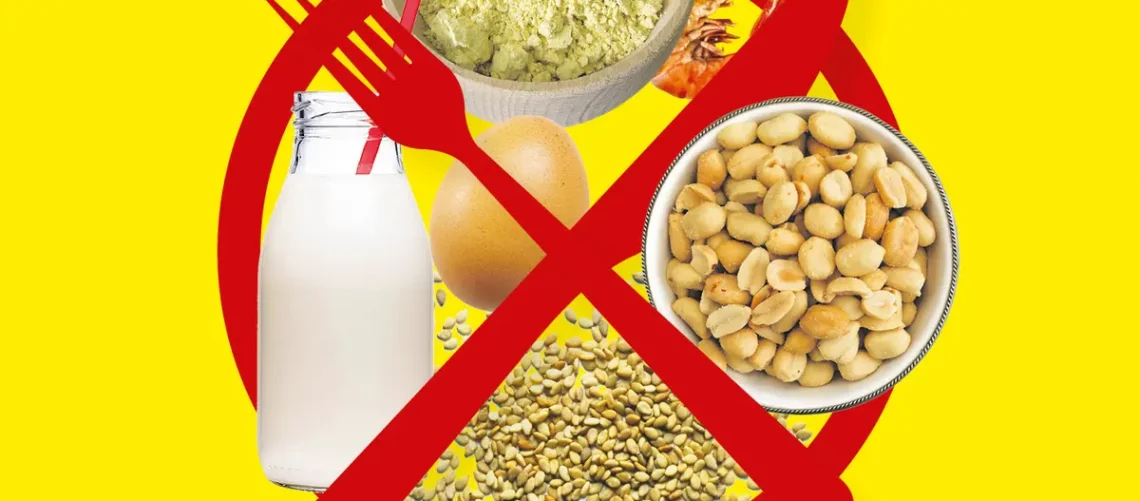Food allergies have been on the rise, so it’s natural to wonder about the potential harm to your child. Food Allergy Research & Education estimates that one in every 13 children has food allergies, or two children in every classroom.
While reactions to food can be serious, it’s important to know the facts and what you can do to help reduce your child’s risk. Promising treatments for food allergies are in the works. Ongoing studies indicate it may be possible to “desensitize” children, even those with severe reactions.
What Is a Food Allergy?
A food allergy reaction happens when the immune system attacks a food protein that it mistakes as a threat to the body. Symptoms may include itching or swelling of the mouth, throat, face or skin; trouble breathing; and stomach pain, diarrhea, nausea or vomiting. A severe food allergy can be life threatening.
To confirm a food allergy and avoid unnecessary dietary restrictions, a diagnosis should be made by a doctor. You should not diagnose yourself or your child with a food allergy. The only way to prevent a food allergy reaction is to completely avoid the food and any product that may contain it as an ingredient.
Food intolerance does not trigger the immune system and is not life threatening or the same as a food allergy, although it may share similar symptoms like diarrhea and stomach pain. For example, a child with a milk allergy must avoid all milk products, while a child who has lactose intolerance (lacking the enzyme to break down a natural sugar in milk), may be able to consume small amounts of dairy.
Common Allergens
The most common food allergies in children are milk, eggs, soy, wheat, peanuts and tree nuts. These foods, along with fish, crustacean shellfish and sesame account for the majority of all food allergy reactions (among children and adults). While your child may outgrow milk, egg, soy or wheat allergies, food allergies to peanuts, tree nuts, fish and shellfish tend to be lifelong.
Tips for Reducing a Child’s Risk of Developing Food Allergies
Take special care with feeding practices during your child’s first years, especially if a biological parent or sibling has been diagnosed with an allergic disease. While following these feeding tips cannot guarantee a child will not develop a food allergy, it may help reduce the risk.
According to findings, exclusive breastfeeding for the first three to four months has been shown to decrease the incidence of atopic dermatitis early in life. Continuing to breastfeed beyond that time frame, even if it is not exclusive, may be protective against wheezing and help to reduce the risk of asthma. The use of soy-based infant formula does not appear to play a role in allergy prevention.
Delaying the introduction of solid foods beyond 4 to 6 months of age does not appear to provide significant protection from developing food allergies. In fact, recent research suggests delaying the introduction of potentially allergenic foods may even increase the risk of food allergy. However, other solid foods should be introduced first and only when a child is developmentally ready.
The National Institute of Allergy recommend introducing peanut-containing foods in forms which are safe for infants as early as 4 to 6 months of age to help prevent peanut allergy. For infants with severe eczema or an egg allergy, testing may be recommended before introducing peanut-containing foods, so be sure to discuss with your child’s health care provider. If at any time your infant reacts badly to a food, such as suddenly developing a skin condition, wheezing, vomiting or excessive diarrhea, or if you have any reason to suspect a food allergy, call your pediatrician immediately.
At this time, there is insufficient evidence to recommend further dietary interventions such as avoiding specific foods (including fish, eggs or peanuts) by mothers during pregnancy or while breastfeeding to protect against the development of food allergies.
Keeping Your Child Healthy and Safe if Diagnosed with a Food Allergy
Once your pediatrician or allergist has tested and confirmed food allergies, you need to be diligent about avoiding the food(s). Always read food labels and if you are unsure of an ingredient, call the manufacturer for details. Educate family, caregivers and teachers about your child’s allergies. Some people don’t know how serious food allergies can be and may not understand even tiny amounts of a food can be a problem. In addition, be sure to teach children about the allergy. Children can learn to take responsibility for avoiding the foods that cause problems.
Consult a registered dietitian nutritionist to develop a healthful eating pattern while avoiding allergens. It may seem easier to eliminate an entire food group for a specific allergy (e.g., avoiding all grains due to wheat allergy), but it’s important to find substitutes (in this case, other grains) that your children will accept, so they can continue to get all the nutrients they need to grow.
When eating away from home, pack back-up foods with you, read restaurant websites and look up nearby grocery stores before you go. As a family, experiment with alternative ingredients and recipes for favorite dishes so your child doesn’t feel left out.
You can help your child feel safe and empowered by finding age-appropriate ways to teach how to discuss and manage allergies, educating and providing action plans to caregivers, and getting social and mental health support for your whole family.

